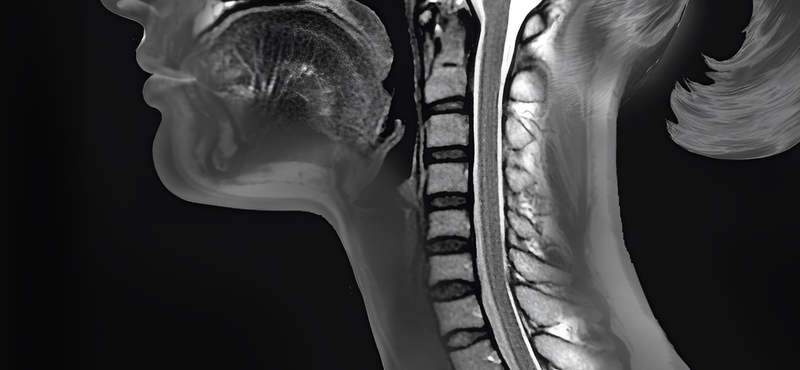[{“available”:true,”c_guid”:”e8b8bf86-b4d5-48fe-8f51-d0ba04483c40″,”c_author”:”MTI”,”category”:”itthon”,”description”:”Itt vannak a nyerőszámok.”,”shortLead”:”Itt vannak a nyerőszámok.”,”id”:”20240623_hatos-lotto-nyeroszamok-25-het”,”image”:”https://img.hvg.hu/Img/ffdb5e3a-e632-4abc-b367-3d9b3bb5573b/e8b8bf86-b4d5-48fe-8f51-d0ba04483c40.jpg”,”index”:0,”item”:”bb544dff-5f8f-450b-8655-89d0f81b5383″,”keywords”:null,”link”:”/itthon/20240623_hatos-lotto-nyeroszamok-25-het”,”timestamp”:”2024. június. 23. 16:52″,”title”:”Nem vitték el a főnyereményt a hatos lottón”,”trackingCode”:”RELATED”,”c_isbrandchannel”:false,”c_isbrandcontent”:false,”c_isbrandstory”:false,”c_isbrandcontentorbrandstory”:false,”c_isbranded”:false,”c_ishvg360article”:false,”c_partnername”:null,”c_partnerlogo”:”00000000-0000-0000-0000-000000000000″,”c_partnertag”:null},{“available”:true,”c_guid”:”8ccb020b-a4fa-460a-a097-27000bbded9b”,”c_author”:”MTI”,”category”:”itthon”,”description”:”Az UV-index helyenként megközelíti, vagy el is éri majd a 8-as értéket.”,”shortLead”:”Az UV-index helyenként megközelíti, vagy el is éri majd a 8-as értéket.”,”id”:”20240623_uv-b-sugarzas-uv-index-elorejelzes-leeges-hetfo”,”image”:”https://img.hvg.hu/Img/ffdb5e3a-e632-4abc-b367-3d9b3bb5573b/8ccb020b-a4fa-460a-a097-27000bbded9b.jpg”,”index”:0,”item”:”d2ea1386-c7ef-472d-a729-da9add41d6fe”,”keywords”:null,”link”:”/itthon/20240623_uv-b-sugarzas-uv-index-elorejelzes-leeges-hetfo”,”timestamp”:”2024. június. 23. 14:32″,”title”:”Durva UV-B sugárzás várható hétfőn az ország több régiójában”,”trackingCode”:”RELATED”,”c_isbrandchannel”:false,”c_isbrandcontent”:false,”c_isbrandstory”:false,”c_isbrandcontentorbrandstory”:false,”c_isbranded”:false,”c_ishvg360article”:false,”c_partnername”:null,”c_partnerlogo”:”00000000-0000-0000-0000-000000000000″,”c_partnertag”:null},{“available”:true,”c_guid”:”9d50add4-6cdf-4d5b-9471-e86ca0d8f28b”,”c_author”:”HVG”,”category”:”360″,”description”:”Vad, szenvedélyes, őrületről, gyilkosságról, a mindenkori kisember manipulálhatóságáról szól örök érvényűen a Woyczek a székesfehérvári Vörösmarty Színház előadásában.”,”shortLead”:”Vad, szenvedélyes, őrületről, gyilkosságról, a mindenkori kisember manipulálhatóságáról szól örök érvényűen a Woyczek…”,”id”:”20240624_hvg-woyczek-vorosmarty-szinhaz-szekesfehervar-hatalmi-daralo”,”image”:”https://img.hvg.hu/Img/ffdb5e3a-e632-4abc-b367-3d9b3bb5573b/9d50add4-6cdf-4d5b-9471-e86ca0d8f28b.jpg”,”index”:0,”item”:”46ee7326-8dd5-4dc2-98a1-43524b27a8cb”,”keywords”:null,”link”:”/360/20240624_hvg-woyczek-vorosmarty-szinhaz-szekesfehervar-hatalmi-daralo”,”timestamp”:”2024. június. 24. 13:30″,”title”:”Újjáéledt a Woyzeck musical, és erősebb az üzenete, mint valaha”,”trackingCode”:”RELATED”,”c_isbrandchannel”:false,”c_isbrandcontent”:false,”c_isbrandstory”:false,”c_isbrandcontentorbrandstory”:false,”c_isbranded”:false,”c_ishvg360article”:true,”c_partnername”:null,”c_partnerlogo”:”00000000-0000-0000-0000-000000000000″,”c_partnertag”:null},{“available”:true,”c_guid”:”7f88bca9-59f9-44ed-bb86-61b8cb9baf73″,”c_author”:”hvg.hu”,”category”:”itthon”,”description”:”A miniszterelnök a Skócia elleni győztes meccs után nyilatkozott.”,”shortLead”:”A miniszterelnök a Skócia elleni győztes meccs után nyilatkozott.”,”id”:”20240624_orban-viktor-most-nehez-napok-jonnek”,”image”:”https://img.hvg.hu/Img/ffdb5e3a-e632-4abc-b367-3d9b3bb5573b/7f88bca9-59f9-44ed-bb86-61b8cb9baf73.jpg”,”index”:0,”item”:”fa58c72c-33c4-4e62-aeca-57f58e2e3e7e”,”keywords”:null,”link”:”/itthon/20240624_orban-viktor-most-nehez-napok-jonnek”,”timestamp”:”2024. június. 24. 09:53″,”title”:”Orbán Viktor: „Most nehéz napok jönnek” “,”trackingCode”:”RELATED”,”c_isbrandchannel”:false,”c_isbrandcontent”:false,”c_isbrandstory”:false,”c_isbrandcontentorbrandstory”:false,”c_isbranded”:false,”c_ishvg360article”:false,”c_partnername”:null,”c_partnerlogo”:”00000000-0000-0000-0000-000000000000″,”c_partnertag”:null},{“available”:true,”c_guid”:”e77a091b-a632-4b32-8f64-1f429d159c0f”,”c_author”:”hvg.hu”,”category”:”sport”,”description”:”A válogatott súlyosan megsérülő támadójáról beszélt a győztes gólt szerző Csoboth Kevin, a mérkőzés legjobbjának választott Sallai Roland és a csapatkapitány Szoboszlai Dominik is.”,”shortLead”:”A válogatott súlyosan megsérülő támadójáról beszélt a győztes gólt szerző Csoboth Kevin, a mérkőzés legjobbjának…”,”id”:”20240624_magyarorszag-skocia-sajtotajekoztato-szoboszlai-dominik-sallai-roland-varga-barnabas”,”image”:”https://img.hvg.hu/Img/ffdb5e3a-e632-4abc-b367-3d9b3bb5573b/e77a091b-a632-4b32-8f64-1f429d159c0f.jpg”,”index”:0,”item”:”a400fdb4-5ab4-4a91-9dfa-529989f460d1″,”keywords”:null,”link”:”/sport/20240624_magyarorszag-skocia-sajtotajekoztato-szoboszlai-dominik-sallai-roland-varga-barnabas”,”timestamp”:”2024. június. 24. 07:53″,”title”:”Varga Barnabásnak üzentek a válogatott játékosai”,”trackingCode”:”RELATED”,”c_isbrandchannel”:false,”c_isbrandcontent”:false,”c_isbrandstory”:false,”c_isbrandcontentorbrandstory”:false,”c_isbranded”:false,”c_ishvg360article”:false,”c_partnername”:null,”c_partnerlogo”:”00000000-0000-0000-0000-000000000000″,”c_partnertag”:null},{“available”:true,”c_guid”:”1fcda308-8cff-4931-bff1-25b0a1768b3d”,”c_author”:”MTI”,”category”:”itthon”,”description”:”Kerülni az 1-es főúton lehet Komárom/Kisbér és a Nagyszentjános/Bőny csomópontok között. “,”shortLead”:”Kerülni az 1-es főúton lehet Komárom/Kisbér és a Nagyszentjános/Bőny csomópontok között. “,”id”:”20240624_baleset-m1-komarom-bony-torlodas”,”image”:”https://img.hvg.hu/Img/ffdb5e3a-e632-4abc-b367-3d9b3bb5573b/1fcda308-8cff-4931-bff1-25b0a1768b3d.jpg”,”index”:0,”item”:”a4db206b-0bcf-496a-aa2d-7a55af6dc72f”,”keywords”:null,”link”:”/itthon/20240624_baleset-m1-komarom-bony-torlodas”,”timestamp”:”2024. június. 24. 17:33″,”title”:”Baleset miatt tíz kilométeres a torlódás Bőnynél az M1-esen Hegyeshalom felé”,”trackingCode”:”RELATED”,”c_isbrandchannel”:false,”c_isbrandcontent”:false,”c_isbrandstory”:false,”c_isbrandcontentorbrandstory”:false,”c_isbranded”:false,”c_ishvg360article”:false,”c_partnername”:null,”c_partnerlogo”:”00000000-0000-0000-0000-000000000000″,”c_partnertag”:null},{“available”:true,”c_guid”:”faebf8d6-59f1-4a37-ada0-4f74cb465858″,”c_author”:”Lidl Magyarország”,”category”:”brandcontent”,”description”:”A borfogyasztás ma is népszerű és trendi, így ha valaki minőségi bort szeretne inni, akkor szerencsére már nem kell messzebb mennie a legközelebbi élelmiszerboltnál ahhoz, hogy beszerezze. Igaz, az, hogy épp mit és mikor fogyasztunk, folyamatosan változik. Cikkünkből kiderül, melyek a legnépszerűbb fajták itthon, de az is, hogy milyen tételekből áll össze az a 29 millió palack, amelyeket a magyar borok külföldi rajongói vásárolnak.”,”shortLead”:”A borfogyasztás ma is népszerű és trendi, így ha valaki minőségi bort szeretne inni, akkor szerencsére már nem kell…”,”id”:”20240624_legnepszerubb_magyar_borok_lidl_magyarorszag_habzobor_prosecco_roze”,”image”:”https://img.hvg.hu/Img/ffdb5e3a-e632-4abc-b367-3d9b3bb5573b/faebf8d6-59f1-4a37-ada0-4f74cb465858.jpg”,”index”:0,”item”:”283535b4-6474-427a-a638-036af1301d9e”,”keywords”:null,”link”:”/brandcontent/20240624_legnepszerubb_magyar_borok_lidl_magyarorszag_habzobor_prosecco_roze”,”timestamp”:”2024. június. 24. 11:30″,”title”:”Üde és gyümölcsös magyar borok: ezek a legnépszerűbb tételek az itthoni és a nemzetközi piacon”,”trackingCode”:”RELATED”,”c_isbrandchannel”:false,”c_isbrandcontent”:true,”c_isbrandstory”:false,”c_isbrandcontentorbrandstory”:true,”c_isbranded”:true,”c_ishvg360article”:false,”c_partnername”:null,”c_partnerlogo”:”00000000-0000-0000-0000-000000000000″,”c_partnertag”:null},{“available”:true,”c_guid”:”910831c9-dcc1-417c-8a51-f4aea69e3f21″,”c_author”:”HVG”,”category”:”tudomany”,”description”:”Svéd kutatók arra voltak kíváncsiak, milyen hatással lehet az egészségre az, hogy a tetoválás tintája a nyirokcsomóban gyűlik össze.”,”shortLead”:”Svéd kutatók arra voltak kíváncsiak, milyen hatással lehet az egészségre az, hogy a tetoválás tintája a nyirokcsomóban…”,”id”:”20240624_tetovalas-tinta-egeszsegugyi-kockazat-rakos-megbetegedes-limfomfa”,”image”:”https://img.hvg.hu/Img/ffdb5e3a-e632-4abc-b367-3d9b3bb5573b/910831c9-dcc1-417c-8a51-f4aea69e3f21.jpg”,”index”:0,”item”:”0209a783-e974-4459-bf62-e570e22d6863″,”keywords”:null,”link”:”/tudomany/20240624_tetovalas-tinta-egeszsegugyi-kockazat-rakos-megbetegedes-limfomfa”,”timestamp”:”2024. június. 24. 12:03″,”title”:”Van tetoválása? Kiderült egy elég rossz dolog róla”,”trackingCode”:”RELATED”,”c_isbrandchannel”:false,”c_isbrandcontent”:false,”c_isbrandstory”:false,”c_isbrandcontentorbrandstory”:false,”c_isbranded”:false,”c_ishvg360article”:false,”c_partnername”:null,”c_partnerlogo”:”00000000-0000-0000-0000-000000000000″,”c_partnertag”:null}]









